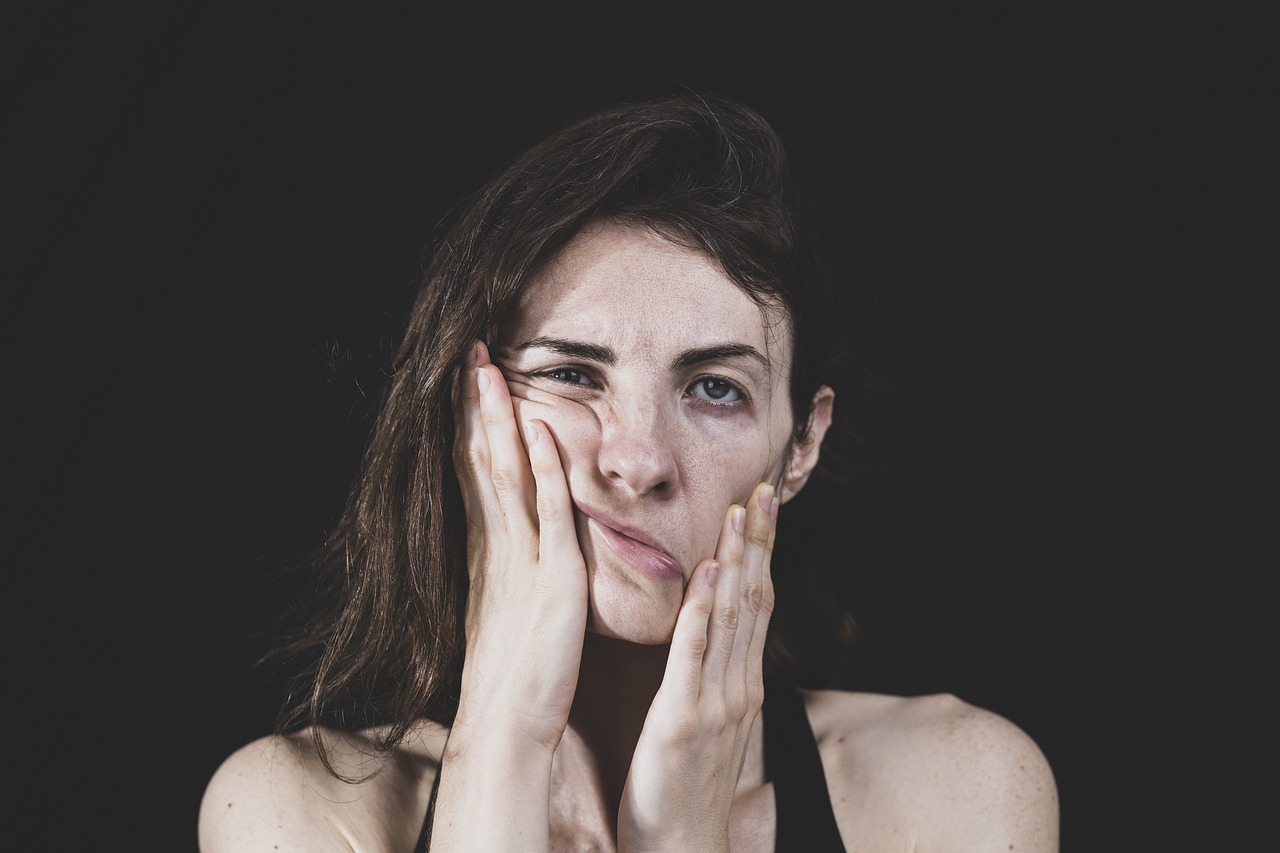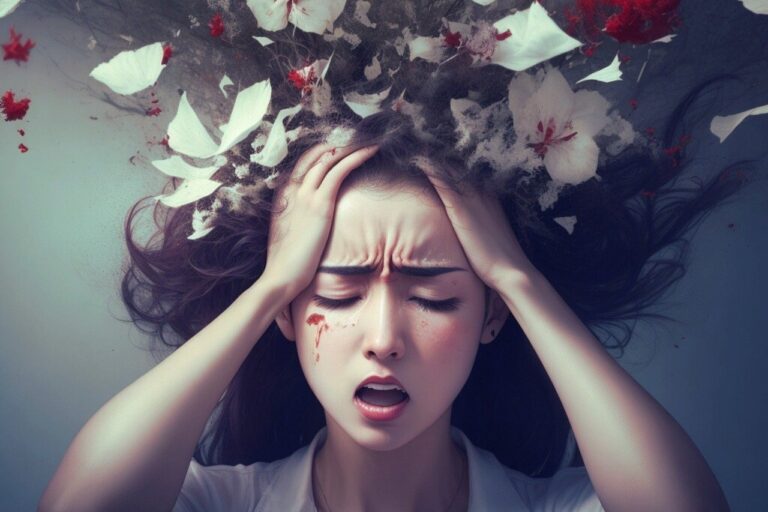Understanding the Physical Symptoms of Anxiety and How to Cope
Anxiety is a common and often overwhelming experience that affects millions of people worldwide. While it is primarily known for its psychological symptoms, anxiety also manifests physically, causing a range of distressing sensations. Recognizing and understanding these physical symptoms is crucial for managing anxiety effectively. In this blog post, we will explore the common physical symptoms of anxiety, the science behind them, and provide practical coping strategies to help you regain control and improve your well-being.
Common Physical Symptoms of Anxiety
Increased Heart Rate (Palpitations)
One of the most common physical symptoms of anxiety is an increased heart rate, often described as palpitations. During anxiety episodes, your heart may feel like it’s racing or pounding in your chest. This occurs because anxiety triggers the body’s fight-or-flight response, which prepares you to either confront or escape a perceived threat.
Sweating
Sweating is another prevalent physical symptom of anxiety. You may notice excessive sweating on your palms, face, or underarms, even in cool environments. This happens because anxiety activates the sympathetic nervous system, which increases sweat production as part of the body’s preparation to deal with stress.
Trembling or Shaking
Trembling or shaking can be a visible sign of anxiety. This symptom results from the adrenaline surge that accompanies the fight-or-flight response. The increased adrenaline levels can cause your muscles to twitch or shake uncontrollably.
Shortness of Breath (Hyperventilation)
Shortness of breath, or hyperventilation, is a frightening symptom that often accompanies anxiety. You may feel like you can’t catch your breath or that you’re suffocating. This occurs because anxiety causes you to breathe rapidly and shallowly, disrupting the balance of oxygen and carbon dioxide in your body.
Muscle Tension
Muscle tension is a common physical manifestation of anxiety. You might feel tightness or stiffness in your neck, shoulders, back, or other muscles. Chronic anxiety can lead to ongoing muscle tension, contributing to pain and discomfort.
Headaches
Headaches, particularly tension headaches, are frequently associated with anxiety. The constant muscle tension and stress can cause persistent headaches that worsen with prolonged anxiety.
Stomach Issues (Nausea, Upset Stomach)
Anxiety often affects the digestive system, leading to stomach issues such as nausea, upset stomach, and even irritable bowel syndrome (IBS). The gut-brain connection means that stress and anxiety can directly impact your digestive health.
Dizziness or Lightheadedness
Feeling dizzy or lightheaded is another common symptom of anxiety. This can result from hyperventilation, which reduces blood flow to the brain, or from the overall physical stress that anxiety places on your body.
The Science Behind Physical Symptoms
Fight or Flight Response
The fight-or-flight response is the body’s natural reaction to perceived threats. When you encounter a stressful situation, your body releases adrenaline and cortisol, preparing you to either confront the danger or flee from it. This response is useful in short bursts but can become problematic when triggered frequently by anxiety.
Hormonal Changes
During anxiety, your body releases stress hormones like adrenaline and cortisol. These hormones increase your heart rate, blood pressure, and energy levels, which can lead to the physical symptoms of anxiety. Chronic anxiety keeps these hormone levels elevated, causing ongoing physical stress.
Nervous System Involvement
The autonomic nervous system regulates involuntary bodily functions, including the fight-or-flight response. It comprises the sympathetic nervous system, which triggers the stress response, and the parasympathetic nervous system, which promotes relaxation. Anxiety often results from an imbalance between these two systems, with the sympathetic nervous system being overactive.
Coping Strategies for Physical Symptoms
Breathing Exercises
Techniques to Try:
- Diaphragmatic Breathing: This involves deep breathing from the diaphragm rather than shallow breathing from the chest. It helps calm the nervous system and reduce anxiety symptoms.
- 4-7-8 Breathing: Inhale for a count of 4, hold your breath for a count of 7, and exhale for a count of 8. This technique helps regulate your breath and promote relaxation.
- Box Breathing: Inhale for a count of 4, hold your breath for a count of 4, exhale for a count of 4, and hold again for a count of 4. This method helps balance your breath and reduce stress.
How They Help:
Breathing exercises help activate the parasympathetic nervous system, which counteracts the fight-or-flight response. By slowing down your breath, you can reduce your heart rate, lower blood pressure, and calm your mind.
Progressive Muscle Relaxation
Steps to Practice:
- Find a quiet, comfortable place to sit or lie down.
- Close your eyes and take a few deep breaths.
- Start with your feet and tense the muscles for 5-10 seconds.
- Release the tension and focus on the sensation of relaxation.
- Move up to your calves, thighs, abdomen, chest, arms, and face, repeating the process.
Benefits:
Progressive muscle relaxation (PMR) helps reduce muscle tension and promotes a state of relaxation. By systematically tensing and relaxing different muscle groups, you can release physical stress and calm your mind.
Mindfulness and Meditation
Practices to Explore:
- Mindfulness Meditation: Focus on the present moment without judgment. Pay attention to your breath, bodily sensations, or a specific object.
- Body Scan Meditation: Lie down and mentally scan your body from head to toe, noting any areas of tension and consciously relaxing them.
- Guided Meditation: Use apps like Calm or Headspace to follow guided meditation sessions that help reduce anxiety.
How They Help:
Mindfulness and meditation practices help shift your focus away from anxious thoughts and promote a state of calm. By regularly practicing mindfulness, you can reduce the intensity of physical anxiety symptoms and improve your overall mental health.
Regular Physical Activity
Recommended Exercises:
- Yoga: Combines physical postures, breathing exercises, and meditation to reduce anxiety and improve flexibility.
- Walking or Jogging: Simple cardiovascular exercises that boost endorphin levels and improve mood.
- Strength Training: Helps build muscle and reduce physical tension associated with anxiety.
Benefits:
Regular physical activity releases endorphins, which are natural mood boosters. Exercise also helps reduce levels of stress hormones like cortisol, promoting relaxation and improving sleep quality.
Healthy Diet and Hydration
Nutritional Tips:
- Eat a Balanced Diet: Include a variety of fruits, vegetables, whole grains, lean proteins, and healthy fats in your meals.
- Limit Caffeine and Sugar: These can exacerbate anxiety symptoms by increasing heart rate and causing energy crashes.
- Stay Hydrated: Drink plenty of water throughout the day to stay hydrated and support overall health.
How It Helps:
A healthy diet and proper hydration support your body’s overall functioning, including your nervous system. By maintaining balanced blood sugar levels and providing essential nutrients, you can reduce the physical impact of anxiety.
Adequate Sleep
Tips for Better Sleep:
- Establish a Routine: Go to bed and wake up at the same time each day, even on weekends.
- Create a Relaxing Bedtime Ritual: Engage in calming activities before bed, such as reading or taking a warm bath.
- Optimize Your Sleep Environment: Keep your bedroom cool, dark, and quiet, and invest in a comfortable mattress and pillows.
Connection to Anxiety:
Adequate sleep is crucial for managing anxiety. Poor sleep can exacerbate anxiety symptoms, while good sleep hygiene can improve your ability to cope with stress and reduce physical symptoms.
Therapeutic Techniques
Strategies to Try:
- Cognitive-Behavioral Therapy (CBT): A structured therapy approach that helps you identify and change negative thought patterns and behaviors contributing to anxiety.
- Biofeedback: A technique that uses electronic monitoring to help you gain awareness and control over physiological functions, such as heart rate and muscle tension.
- Relaxation Techniques: Practices like progressive relaxation and guided imagery that help reduce physical symptoms of anxiety.
Benefits:
Therapeutic techniques provide structured, evidence-based approaches to managing anxiety. They help you develop coping skills, improve emotional regulation, and reduce the physical impact of anxiety.
When to Seek Professional Help
Recognizing Severe Symptoms
It’s essential to recognize when anxiety symptoms become severe and require professional intervention. Indicators include:
- Persistent, intense anxiety that interferes with daily life.
- Physical symptoms that do not improve with self-help strategies.
- Panic attacks or severe physical reactions to anxiety.
Types of Professional Help
Psychologists and Counselors:
These mental health professionals can provide therapy and counseling to help you manage anxiety. Cognitive-behavioral therapy (CBT) is particularly effective for treating anxiety disorders.
Psychiatrists:
Psychiatrists can prescribe medication to help manage anxiety symptoms. Medications such as selective serotonin reuptake inhibitors (SSRIs) or benzodiazepines may be recommended based on your specific needs.
Combining Professional Help with Self-Help Strategies
Combining professional treatment with self-help strategies offers a holistic approach to managing anxiety. Therapy can provide the tools and support you need, while self-help strategies can reinforce and complement professional guidance.
Understanding the physical symptoms of anxiety and learning how to cope with them is crucial for improving your overall well-being. By recognizing common symptoms, understanding the science behind them, and implementing effective coping strategies, you can take control of your anxiety. Remember to prioritize healthy habits, seek professional help when needed, and be patient with yourself as you navigate your anxiety management journey. With consistent effort and the right support, you can reduce the physical impact of anxiety and enhance your quality of life.
Affiliate Links:
- Calm: Try the Calm app for guided meditations and mindfulness exercises.
- Headspace: Explore Headspace for mindfulness and meditation resources.
- The Anxiety and Phobia Workbook by Edmund J. Bourne: A comprehensive guide to managing anxiety.
References:
- National Institute of Mental Health. (n.d.). Anxiety Disorders. Retrieved from https://www.nimh.nih.gov/health/topics/anxiety-disorders
- Mayo Clinic. (n.d.). Anxiety Disorders: Symptoms & Causes. Retrieved from https://www.mayoclinic.org/diseases-conditions/anxiety/symptoms-causes/syc-20350961



